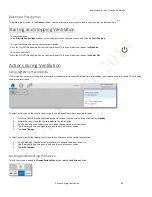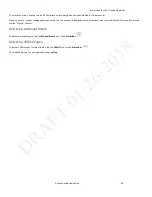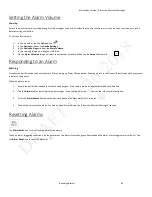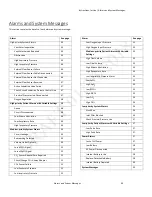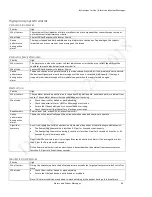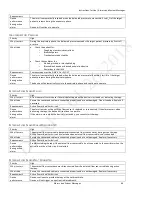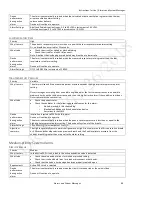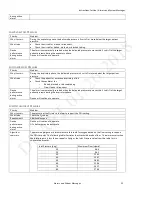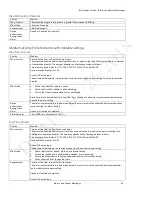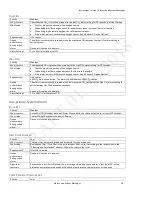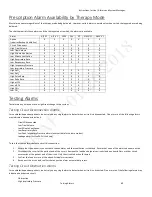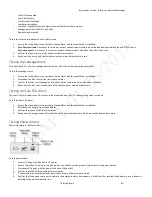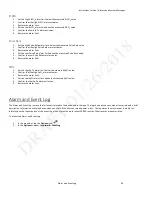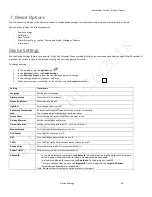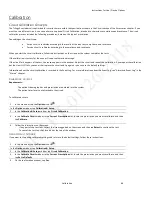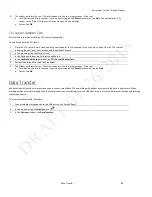
Instructions for Use | Alarms and System Messages
Alarms and System Messages
53
H
IGH
O
XYGEN
I
NPUT
P
RESSURE
Priority
Medium
Why it occurs
The measured oxygen inlet pressure is greater than or equal to 87psig.
What to do
Check the O
2
source.
Requirements
Additional oxygen
Device
performance
during active
alarm
Device will continue to operate.
Medium-priority Patient Alarms with Variable Settings
H
IGH
T
IDAL
V
OLUME
Priority
Medium
Why it occurs
Passive, active flow, or dual limb circuit types:
The estimated exhaled tidal volume is greater than or equal to the High Vte alarm setting for a number
of consecutive breaths. The number depends on the therapy mode as follows.
Three consecutive breaths: A/C-PC, CPAP, PSV, S/T, SIMV-VC, and SIMV-PC.
Six consecutive breaths: A/C-VC
Active PAP circuit type:
The delivered tidal volume is greater than or equal to the High Vti alarm setting for three consecutive
breaths.
What to do
•
Check the patient for pain or anxiety.
•
Check the circuit for kinked or pinched tubing.
•
Ensure that the active exhalation valve is attached.
Note: For active flow and dual limb, low flow O
2
or the use of a nebulizer may increase tidal volumes
beyond the alarm setting.
Device
performance
during active
alarm
The alarm is automatically resolved when a breath occurs in which the exhaled tidal volume does not
reach the High Vte alarm setting.
Device will continue to operate.
Alarm Settings
10 to 2000 ml in increments of 5 ml.
L
OW
T
IDAL
V
OLUME
Priority
Medium
Why it occurs
Passive, active flow, or dual limb circuit types:
The estimated exhaled tidal volume is less than or equal to the low tidal volume alarm setting for a
number of consecutive breaths. The number depends on the therapy mode as follows.
Three consecutive breaths: A/C-PC, CPAP, PSV, S/T, SIMV-VC, and SIMV-PC.
Six consecutive breaths: A/C-VC
Active PAP circuit type:
The delivered tidal volume is less than or equal to the low tidal volume setting.
What to do
•
Check the circuit for kinked, pinched, or blocked tubing.
•
Ensure the leak device is not blocked, occluded, or disconnected.
•
Ensure the diaphragm in the active exhalation device is inserted correctly.
•
Check the mask fit or change the mask.
Requirements
Passive, active flow, or dual limb circuit types:
The alarm is automatically resolved when a breath occurs in which the exhaled tidal volume exceeds
the low tidal volume alarm setting.
Device will continue to operate.
Active PAP circuit type
:

